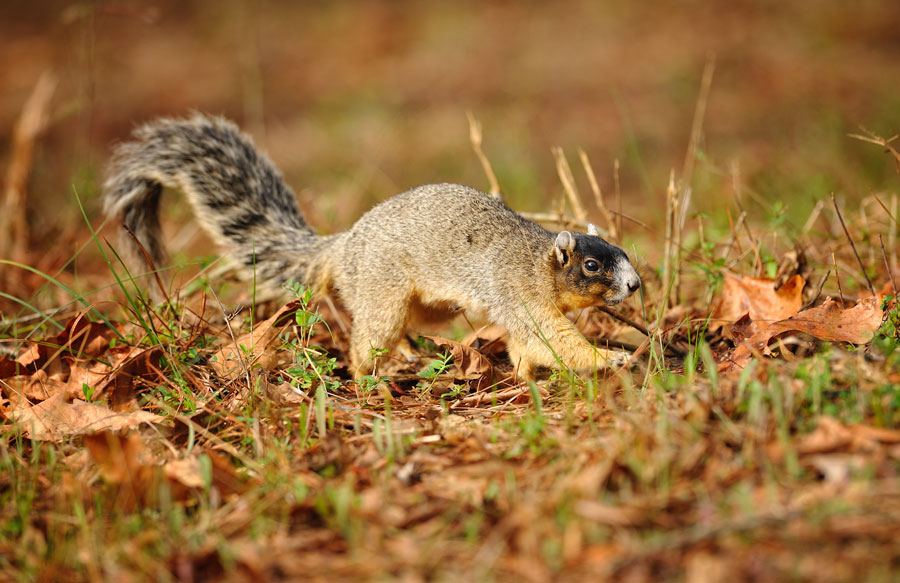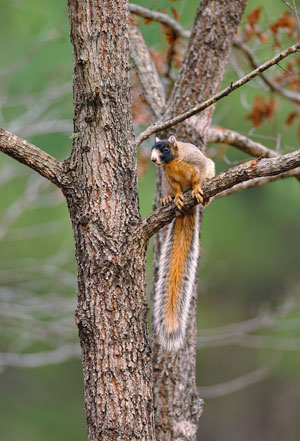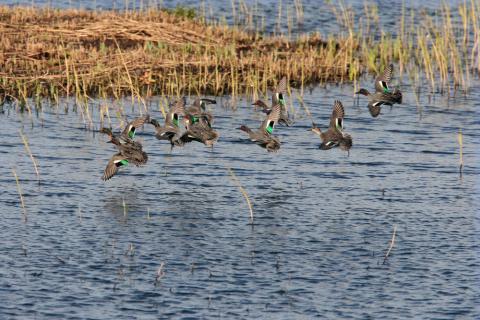Article and photos by Tes Randle Jolly | Originally published in GameKeepers: Farming for Wildlife Magazine. To subscribe, click here.

As gamekeepers, our habitat and timber management practices not only benefit targeted game species like deer, wild turkey and quail, but other local non-game wildlife also benefit from our efforts. One example is the fox squirrel, (Sciurus niger). Fox squirrels may be vexing to our management efforts at times, but their distinctive appearance and interesting characteristics make their presence uniquely special. As “Nature’s tree planters” they add value to the environment and our outdoor experience.
 What Do Fox Squirrels Look Like?
What Do Fox Squirrels Look Like?
With short ears and a common mask-like facial pattern, the fox squirrel obviously gets its handle from a fox because of its much larger size, common reddish-brown color and a fox-like lope when it scampers along the ground.
The fox squirrel has uniquely flexible ankle joints which allow it to rotate its feet 180 degrees as it descends tree trunks head first. It can hang by its hind limbs while grasping food in its front fee. An agile jumper, it easily makes fifteen feet horizontal leaps and free-falls twenty feet or more to a soft landing. One of the interesting qualities of a Fox Squirrel is that they sweat through their paws in hot weather, leaving damp tracks on a dry surface.
Fox Squirrel Range:
Ten North American subspecies are recognized and widely distributed from the Atlantic coast to the Great Plains, and from south Florida to the Great Lakes and the Canadian border.
Fox Squirrel Size:
Is the Western Hemisphere’s largest tree squirrel. Adults average 2.5 pounds and measure up to 27.5 inches; about half of the length of its tail.
What Eats Squirrels?
Has relatively few predators as an adult. Most are taken opportunistically by bobcats, foxes, red-tailed hawks, red-shouldered hawks, great-horned owls, barred owls and dogs. Nestling and young are vulnerable to raccoons, opossums, rat snakes and pine snakes.

 What Do Fox Squirrels Look Like?
What Do Fox Squirrels Look Like?


























